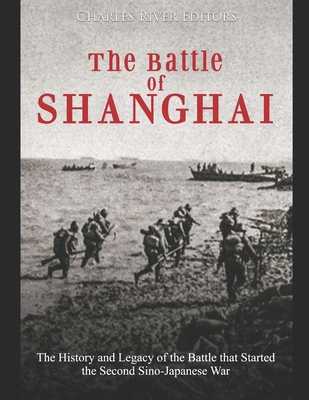The Battle of Shanghai: The History and Legacy of the Battle that Started the Second Sino-Japanese War

The Battle of Shanghai: The History and Legacy of the Battle that Started the Second Sino-Japanese War
*Includes a bibliography for further reading
On October 29, 1937, a large crowd of people gathered on the bank of the Wusong River in Shanghai to watch a spectacle, a life and death struggle unfolding directly in front of them across the river. The crowd was a curious blend of Chinese, European, and American civilians and journalists. Their focus was on the Sihang Warehouse across the river, but it wasn't the warehouse itself that fascinated the onlookers. Instead, it was the men inside the warehouse, the men of the 524th Regiment, the 88th Division of the Chinese Nationalist Army. The soldiers were elite, and they were widely considered the best of the Nationalist Army. They proudly called themselves "the Generalissimo's Own," after Jiang Jieshi, the generalissimo of the Nationalist government and leader of China. The Chinese soldiers were prepared to fight and die to the last man, and they were making their last stand there.
By then, the city of Shanghai was in shambles. The Imperial Japanese Military had invaded Shanghai on August 13, 1937, rapidly reducing the once-prosperous city to a pile of burning rubble after three months of brutal urban combat. Countless blazing fires raged throughout the city, some of which had been caused by the fighting, but most had been set by the retreating Chinese Army in a futile effort to stall the Japanese invaders. The Chinese Nationalist Army had fought valiantly against the Japanese, but the Chinese were hopelessly outgunned. Possessing few heavy weapons, aircraft, and artillery, the Nationalist Army could not hope to defeat the Japanese, who possessed superior firepower in every engagement against the Chinese troops. Causality rates for the Nationalist Army were horrific, with some units being completely wiped out in the fighting. Many Nationalist Army units would be completely annihilated in the three months of house-to-house fighting. As spectators watched from across the river, a barrage of Japanese artillery slammed the warehouse, creating enormous craters on the walls and sending shockwaves throughout the building. The Sihang Warehouse was six stories tall and made from thick concrete, making it the ideal building to defend against an enemy with superior firepower, but the Chinese soldiers could only hope to hold out for so long. The bulk of their army had already retreated, leaving the 524th the only Chinese unit left in the city.
Rubble and the smell of cordite filled the air
PRP: 86.34 Lei
Acesta este Pretul Recomandat de Producator. Pretul de vanzare al produsului este afisat mai jos.
77.71Lei
77.71Lei
86.34 LeiIndisponibil
Descrierea produsului
*Includes a bibliography for further reading
On October 29, 1937, a large crowd of people gathered on the bank of the Wusong River in Shanghai to watch a spectacle, a life and death struggle unfolding directly in front of them across the river. The crowd was a curious blend of Chinese, European, and American civilians and journalists. Their focus was on the Sihang Warehouse across the river, but it wasn't the warehouse itself that fascinated the onlookers. Instead, it was the men inside the warehouse, the men of the 524th Regiment, the 88th Division of the Chinese Nationalist Army. The soldiers were elite, and they were widely considered the best of the Nationalist Army. They proudly called themselves "the Generalissimo's Own," after Jiang Jieshi, the generalissimo of the Nationalist government and leader of China. The Chinese soldiers were prepared to fight and die to the last man, and they were making their last stand there.
By then, the city of Shanghai was in shambles. The Imperial Japanese Military had invaded Shanghai on August 13, 1937, rapidly reducing the once-prosperous city to a pile of burning rubble after three months of brutal urban combat. Countless blazing fires raged throughout the city, some of which had been caused by the fighting, but most had been set by the retreating Chinese Army in a futile effort to stall the Japanese invaders. The Chinese Nationalist Army had fought valiantly against the Japanese, but the Chinese were hopelessly outgunned. Possessing few heavy weapons, aircraft, and artillery, the Nationalist Army could not hope to defeat the Japanese, who possessed superior firepower in every engagement against the Chinese troops. Causality rates for the Nationalist Army were horrific, with some units being completely wiped out in the fighting. Many Nationalist Army units would be completely annihilated in the three months of house-to-house fighting. As spectators watched from across the river, a barrage of Japanese artillery slammed the warehouse, creating enormous craters on the walls and sending shockwaves throughout the building. The Sihang Warehouse was six stories tall and made from thick concrete, making it the ideal building to defend against an enemy with superior firepower, but the Chinese soldiers could only hope to hold out for so long. The bulk of their army had already retreated, leaving the 524th the only Chinese unit left in the city.
Rubble and the smell of cordite filled the air
Detaliile produsului











